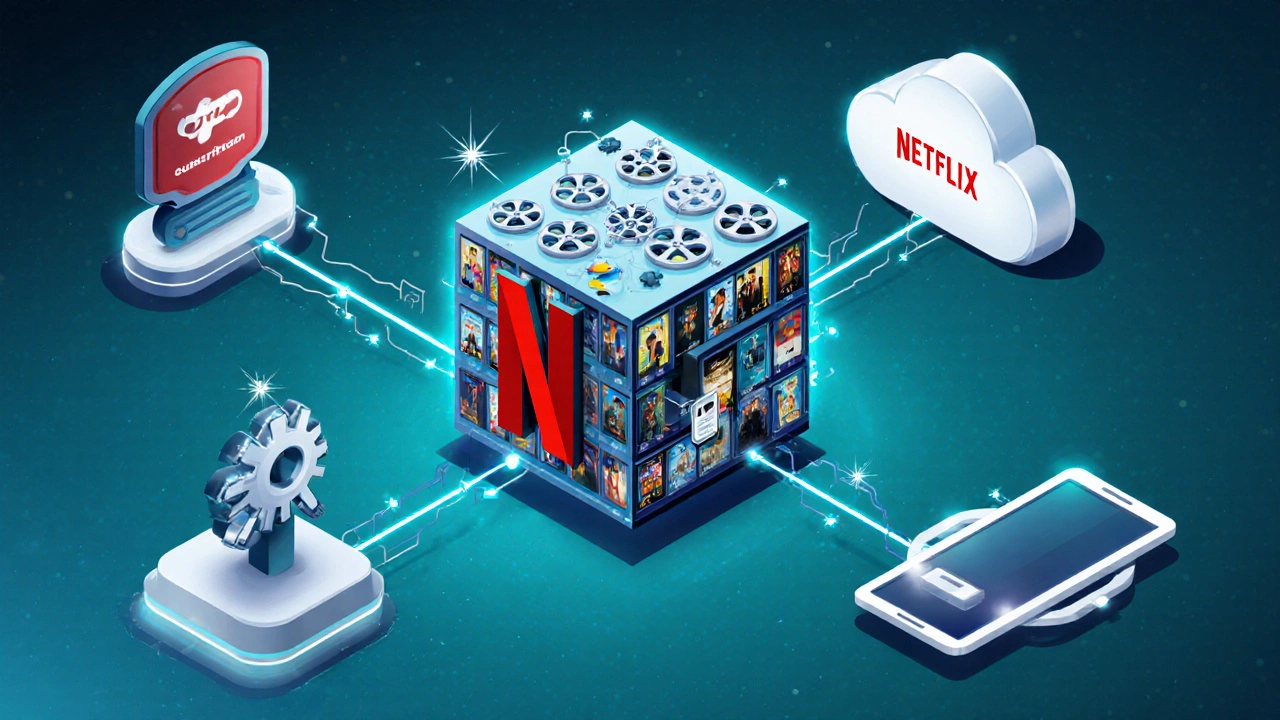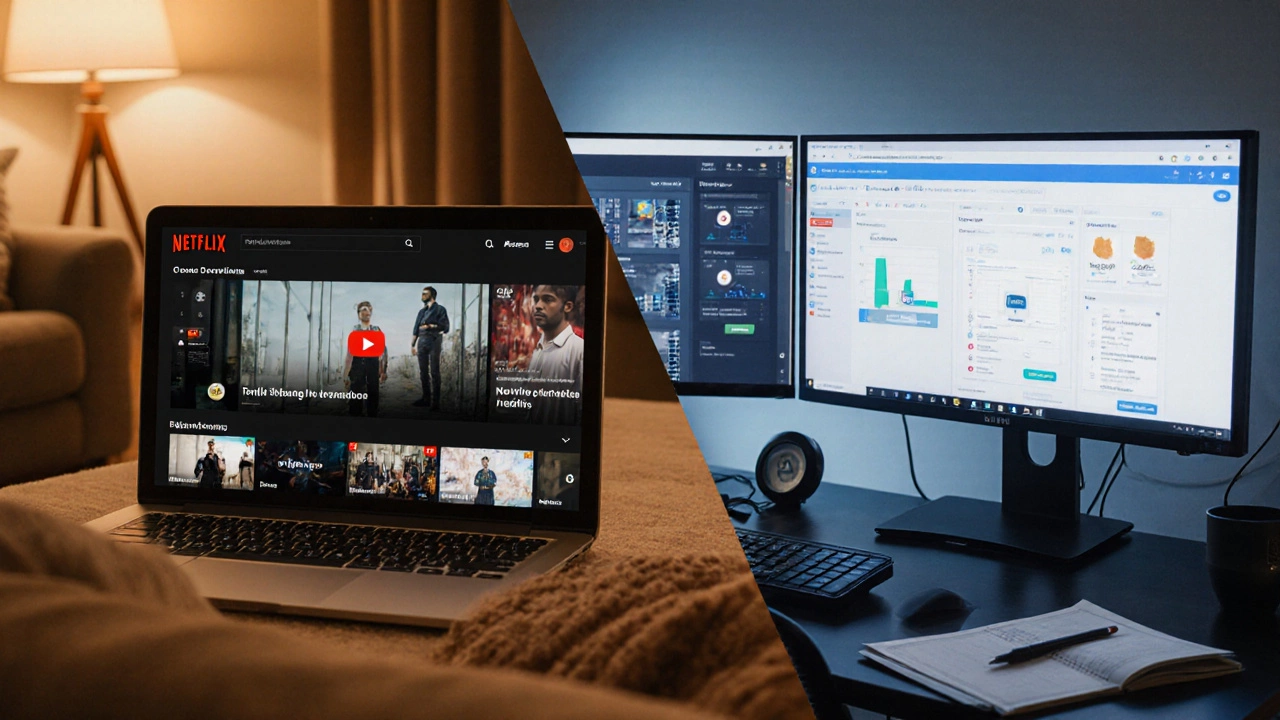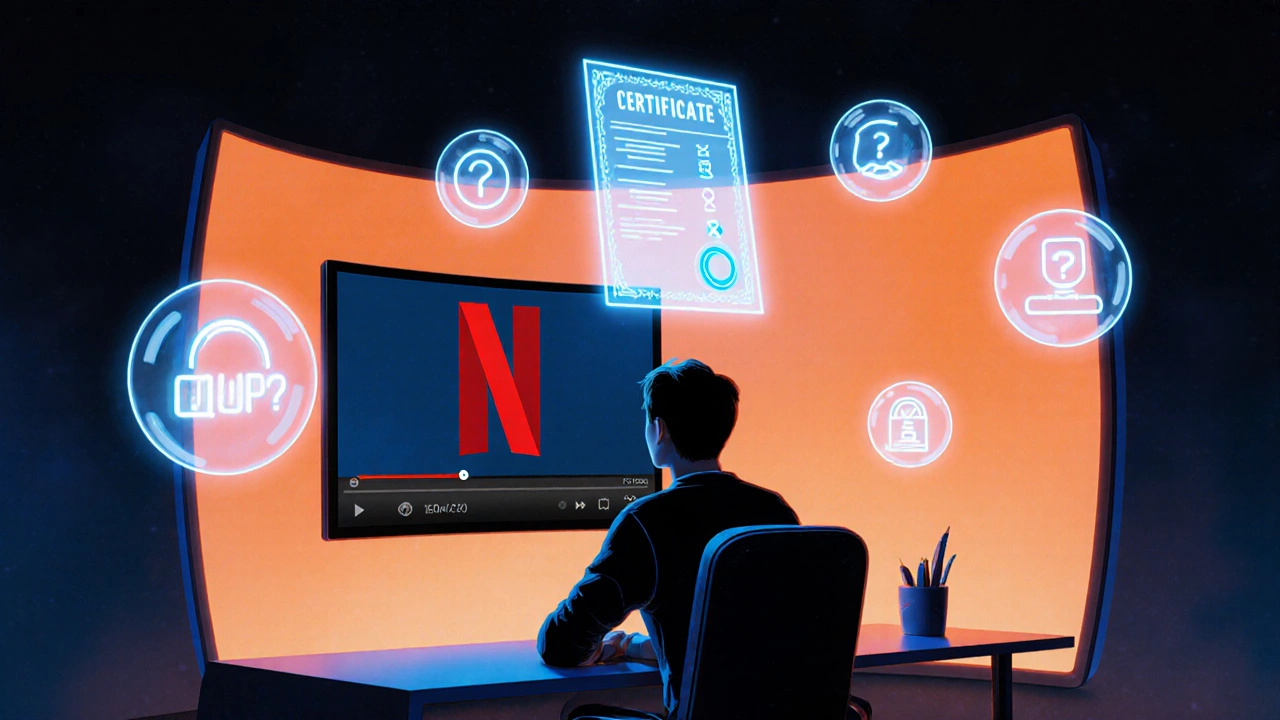Is Netflix a Digital Platform? Exploring Its Role in E‑Learning

E-learning Platform Checker
Check if a Platform Qualifies as E-learning
This tool helps you evaluate whether a digital platform meets the essential criteria for an e-learning platform. Based on the article, e-learning platforms must provide structured learning pathways, assessment tools, credentialing, progress tracking, and interactivity.
Results
Key Takeaways
- Netflix meets the technical definition of a digital platform but differs in purpose from traditional e‑learning platforms.
- Its core features - content library, subscription model, recommendation engine, and user interface - are common to many digital platforms.
- Educational content on Netflix is growing, yet the service lacks interactive assessments and credentialing.
- When judging whether a service qualifies as an e‑learning platform, look for learning‑centric design, tracking, and certification.
- Netflix can complement formal learning, but it isn’t a replacement for dedicated e‑learning platforms.
When you hear the name Netflix is a subscription‑based streaming service that delivers video on demand to millions worldwide, you probably picture binge‑watching sitcoms. The question “Is Netflix a digital platform?” pushes us to look beyond entertainment and examine the platform’s architecture, business model, and growing educational catalog.
Defining a Digital Platform
A digital platform is a technology‑driven environment that connects users with content, services, or other users through a unified interface. Key attributes include:
- Centralized content library that can be accessed on demand.
- A subscription model or other monetization method that funds ongoing delivery.
- Algorithmic recommendation engine that personalizes user experience.
- A responsive user interface across devices.
- APIs or integrations that allow third‑party tools to extend functionality.
If a service ticks most of these boxes, it qualifies as a digital platform - regardless of its content focus.
Netflix’s Platform Anatomy
Let’s break down Netflix against the checklist above.
- Content Library: Over 5,000 titles, ranging from movies to original series and, increasingly, documentary‑style educational series.
- Subscription Model: Tiered pricing (Basic, Standard, Premium) with monthly billing, auto‑renewal, and a free‑trial period.
- Recommendation Engine: Machine‑learning algorithms analyze viewing history, genre preference, and even time of day to surface next‑watch suggestions.
- User Interface: Consistent design on web, mobile, smart TV, and gaming consoles, supporting profiles, parental controls, and offline downloads.
- APIs & Integrations: Netflix partners with smart‑home devices (Alexa, Google Home) and offers a limited public API for content metadata.
All these components align with the digital platform definition, confirming that Netflix is indeed a digital platform.

Where Netflix Differs from Traditional E‑Learning Platforms
Traditional e‑learning platforms like Coursera, Udemy, or Khan Academy share many structural traits with Netflix, but they diverge on purpose and feature set.
| Feature | Netflix | e‑Learning Platform (e.g., Coursera) |
|---|---|---|
| Primary Purpose | Entertainment and casual learning | Structured education and credentialing |
| Content Type | Pre‑produced video series, documentaries | Video lectures, quizzes, assignments, peer review |
| Monetization | Subscription‑only | Subscription, pay‑per‑course, free audit options |
| Interactivity | Limited (watch, pause, skip) | High (quizzes, forums, labs, certifications) |
| Assessment & Credentialing | None | Certificates, graded assessments, pathways |
| Target Audience | General consumers | Students, professionals, lifelong learners |
The biggest gap is interactivity and assessment. Netflix excels at delivering high‑quality video but does not track learning progress or award credentials.
Educational Content on Netflix: A Growing Segment
Netflix has invested in documentaries, science series (e.g., “Our Planet”, “The Mind, Explained”), and even short courses with expert hosts. These titles offer:
- High production values that can spark curiosity.
- Story‑driven narratives that make complex topics accessible.
- Unlimited replay, allowing learners to pause and reflect.
However, the experience remains passive. Without quizzes, discussion boards, or progress tracking, the content serves more as supplementary material than a full‑fledged course.
Checklist: Is a Service an E‑Learning Platform?
Use this quick list when you’re unsure whether a digital platform qualifies as an e‑learning solution.
- Does the service provide structured learning pathways (modules, units, or tracks)?
- Are there built‑in assessment tools (quizzes, assignments, grading)?
- Is there a credential or certificate issued on completion?
- Can learners track progress and receive feedback?
- Does the platform support interaction (forums, live sessions, peer review)?
If you answer “yes” to most of these, you’re likely looking at an e‑learning platform. Netflix answers “no” to the majority, confirming its primary identity as a entertainment‑focused digital platform.

How Netflix Can Fit Into a Learner’s Toolkit
Even though Netflix isn’t a dedicated e‑learning platform, it can still play a supportive role:
- Concept Introduction: Use a documentary to spark interest before diving into a structured course.
- Supplementary Material: Pair a Netflix series with hands‑on exercises from a platform like Udemy.
- Motivation Boost: Reward progress in a formal course with a Netflix episode of the learner’s choice.
In practice, many educators curate playlists that combine Netflix clips with quiz widgets from Google Forms or LMS tools, creating a blended learning experience.
Future Outlook: Will Netflix Evolve Into an E‑Learning Platform?
Streaming giants are already testing new models. Netflix announced a pilot program in 2024 that bundles short‑form “Learn with Netflix” courses with optional certificates issued by third‑party partners. If the pilot gains traction, we could see:
- Integration of interactive assessment widgets within the video player.
- Partnerships with universities to offer accredited micro‑credentials.
- A dedicated “Education” tab that separates entertainment from learning tracks.
Until such features become mainstream, Netflix remains a digital platform that supplements, rather than replaces, traditional e‑learning solutions.
Frequently Asked Questions
Does Netflix provide any certification for its educational content?
No, Netflix does not issue certificates or formal credentials for any of its documentaries or educational series. The content is designed for casual learning.
Can I integrate Netflix videos into an LMS like Moodle?
You can embed Netflix titles using the public embedding feature, but most institutions restrict it due to licensing. A safer approach is to link to the video and ask learners to watch it on their own devices.
How does Netflix’s recommendation algorithm differ from e‑learning recommendation systems?
Netflix focuses on entertainment factors such as genre affinity, viewing time, and social trends. E‑learning systems prioritize skill gaps, learning objectives, and prerequisite pathways when suggesting courses.
Is there a free trial for Netflix’s educational catalog?
Netflix’s standard free‑trial (when available) grants access to the entire library, including documentaries. There is no separate trial for educational content only.
What are the main limitations of using Netflix as a learning tool?
The key limits are lack of interactivity, no progress tracking, and no formal assessment or certification. It’s great for inspiration but not for skill validation.


